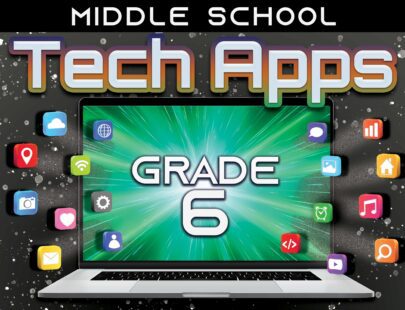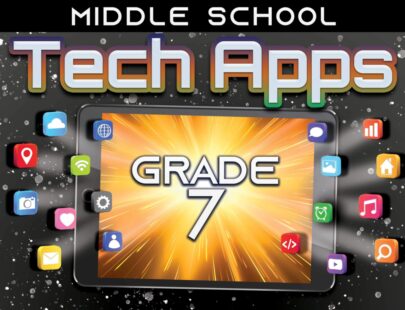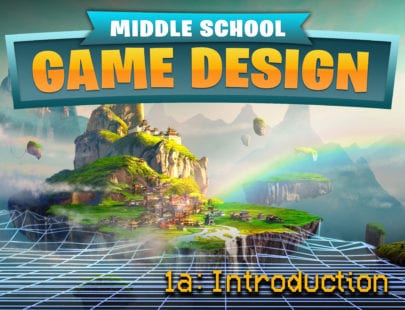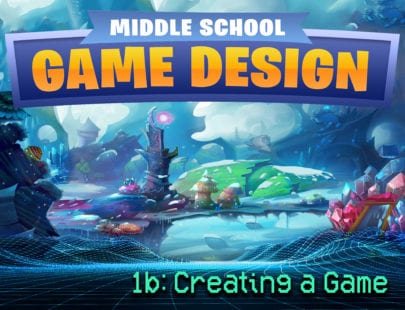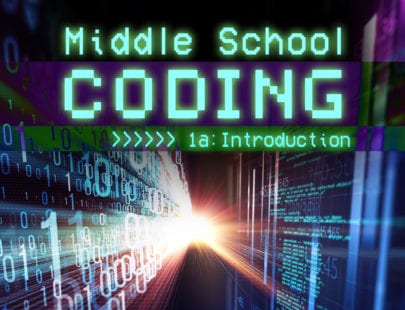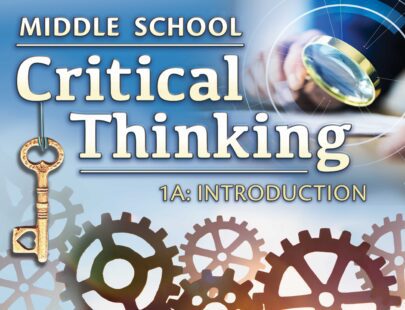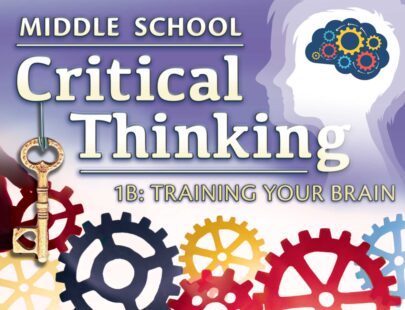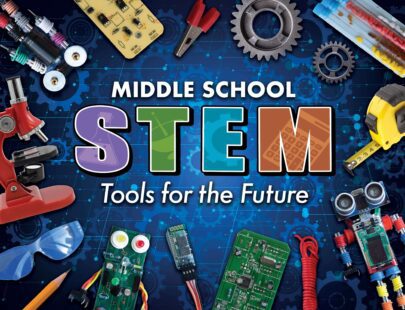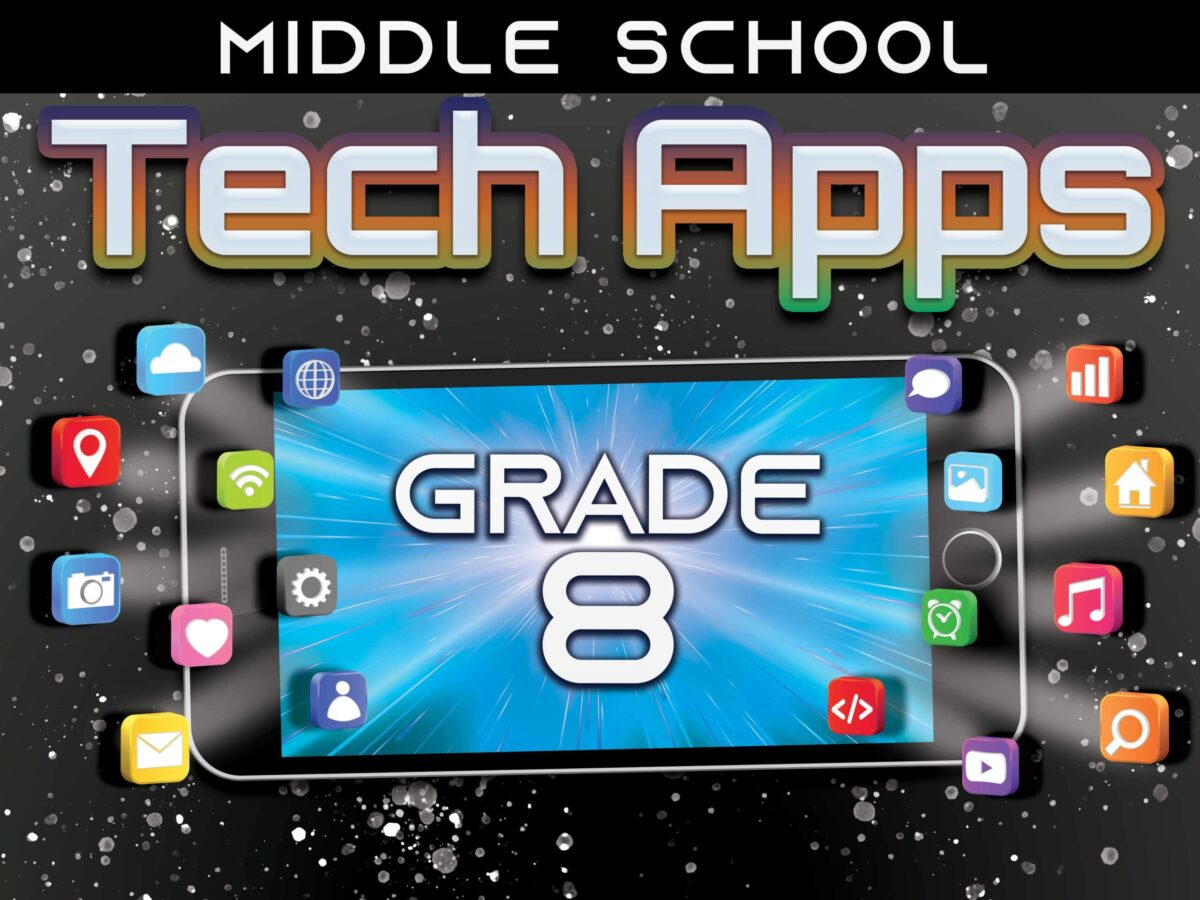
Middle School Tech Apps, Grade 8
Few things move faster than ever-changing technology, and it’s important to try and stay up-to-date on this modern digital transformation. In this course, you will get a guided tour through this towering technological landscape from hacking and hardware, understanding algorithms and basic cybersecurity, and even implementing powerful tools like Google apps. You will also improve your ability to type, code, and use audio and video editing software. In the end, you will learn all about how to be an effective and responsible digital citizen in a cyberworld that is only growing increasingly quick and complex. Let’s get up to speed!
Units at a Glance
Unit 1: Getting Savvy about Cyberspace
Internet technology has transformed every aspect of modern life. From group video chats to virtual assignments and having dinner delivered to our doorsteps, our ability to use modern technology to our advantage has never been greater than it is right now! But while this technology offers incredible advantages, it can also spell serious trouble when it’s used the wrong way. Interacting online thoughtlessly or inappropriately can lead to immediate and long-term trouble. The good news is that by learning how to manage your online interactions in positive ways, you can easily avoid these issues. In this unit, you will discover how to use this technology as a responsible digital citizen.
What will you learn in this unit?
- Explain how online activity relates to the user both now and in the future
- Relate how laws and norms work to keep internet users interacting fairly
- Convey the importance of cybersecurity for keeping internet users safe
- Recognize the signs of cyberbullying and the impact it can have on its victims
Unit 2: Building Your Technology Toolkit
Technology seems to change practically overnight. Cutting-edge gadgets are soon replaced by faster, more powerful, and more efficient versions which get all the attention—for now, at least! This kind of progress can be overwhelming, but the benefits are hard to ignore. Yesterday’s advances in technology quickly led to the new products and applications of today, and those in turn set the stage for the tools of tomorrow. In this unit, we’ll look more closely at how technology has transformed our world and at ways that you can maximize technology’s benefits.
What will you learn in this unit?
- Identify new or emerging technologies and explain the ways they impact society
- Explain methods of interfacing with computer technology such as data storage options and file-naming conventions
- Implement shortcuts and troubleshooting techniques for tech gadgets and software
- Evaluate the quality and progress of computer keyboard performance
Unit 3: Be Part of the Solution
Think of that movie you’ve been dying to see. Did you know that some movies can take as long as four years to make but show in theaters for only about four weeks? It’s true. And that long list of names rolling at the end of the movie names the dozens—sometimes hundreds—of people who receive some credit for solving the problems on route to making the movie a reality. The same goes for games, apps, and electric cars, to name a few. But the products we enjoy didn’t get made by accident. They all took an enormous amount of time, effort, and teamwork to produce. In this unit, you’ll explore how this kind of collaboration takes place. You’ll also discover the skills you can develop and the tools you can use to tackle the problems you want to solve.
What will you learn in this unit?
- Identify skills and tools to help you identify the nature of a problem
- Engage a process designed to break problems down into more manageable parts
- Describe how practical pseudocode can clarify procedures and instructions
- Demonstrate how flowcharts enhance teamwork and communication
Unit 4: Using Text-Based Algorithms
Did you know that the world runs on largely invisible commands communicated in mathematical languages? Think about your favorite game or app. What do you like the most about it? Is it the graphics that grab your attention? Or has the music hooked you and brought you back for more? Whatever it is, the fact is that a programmer had to code the product so that it would work properly. But that’s the tip of the iceberg! In our modern tech age, code runs virtually everything. In this unit, we’ll begin exploring text-based languages and how they operate. We’ll also take an in-depth look at one text-based language in particular, and you’ll learn how programmers use languages to create a variety of software products all around the world.
What will you learn in this unit?
- Describe the steps of the software development process
- Recognize differences between computing data, such as binary code and bits
- Compare modern software tools used for coding with text-based languages
- Identify the building blocks of the Python coding language
- Explain the two foundational operations for using the Python coding language
Unit 5: This Is Just a Formality
Social media has totally transformed not only how we interact with one another but also how we live our lives. If you’re stuck on a math problem, you can bet YouTube has a video that can help you solve it. If you’re looking for a recipe for banana bread, you can choose from any number of them on Pinterest. We share mind-boggling amounts of information across the internet. But this kind of easy access can make things a little too comfortable and familiar. Professionalism and formal interaction are still vital to our social interactions—even online. In this unit, we will evaluate the contexts for various kinds of social interaction. Then, we will turn to tools designed to help you stay focused and productive while working online. Finally, we’ll wrap up the unit by reviewing standards that apply to creating and consuming online digital content. That way, you’ll be prepared for any online interaction!
What will you learn in this unit?
- Distinguish between various types of online social interactions
- Relay the importance of ethics and laws for posting content online
- Spot ways content can be crafted to convey a biased point of view
- Share strategies for sourcing accurate and relevant online content
Unit 6: Now, Put It All Together
Today’s technology moves quickly. From searching the internet to sending and receiving messages, we want our content, and we want it NOW! Cutting-edge developments are ready to send today’s tech into tomorrow’s sales bins. But tomorrow’s tech is about more than just surfing the web at sonic speed. Fresh features and peak performance are qualities that continue to drive demand. In this unit, we’ll identify, compare, and even combine multiple content tools designed to deliver the quality your audiences crave. By learning to build your brand now, you’ll set yourself up for sustained success, both today and into the increasingly interconnected world of tomorrow.
What will you learn in this unit?
- Process and organize relevant data using appropriate applications
- Craft different forms of media content to connect with a global audience
- Develop and deliver in-person presentations pitched to popular audiences
- Build brand recognition using tools to launch and develop a personal website
Required Materials
Software
- 123apps
- Blogger (requires login)
- CodeSkulptor3
- Google account (requires login)
- Google Drive (requires login)
- Google Sites (requires login)
- Presentation software
- Typing.com (requires login)
- Word processing software
Other
- Helper
Optional
- Audio recording device
- Graphic design software
- Spreadsheet software
- Video recording device
